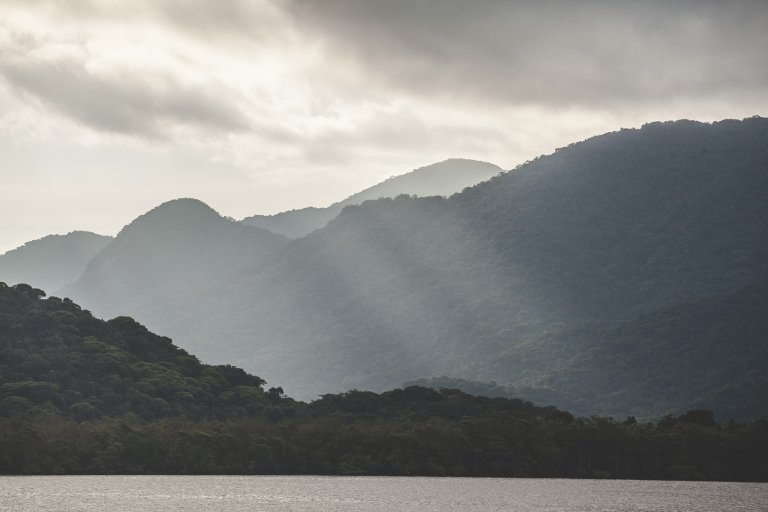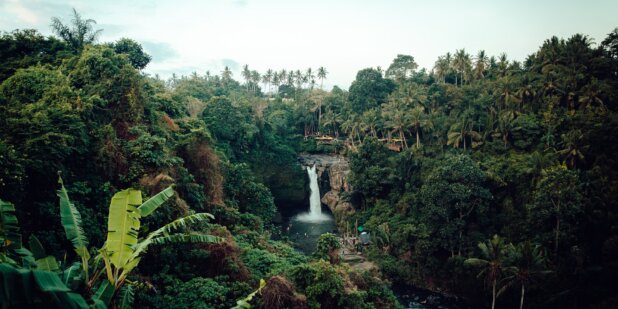- About
- Topics
- Picks
- Audio
- Story
- In-Depth
- Opinion
- News
- Donate
-
Signup for our newsletterOur Editors' Best Picks.Send
Read, Debate: Engage.
Given the severe degradation of the Atlantic Forest, conservation efforts alone are no longer sufficient.

© Bruno Santos
While many instinctively associate Brazil's biomes with the Amazon Forest, it is in the Atlantic Forest (or Mata Atlântica in Portuguese) where 70 percent of Brazilians live.
Covering 15 percent of Brazil's national territory, from the south to the northeast, this biome has lost roughly 115 million hectares historically, according to the NGO SOS Mata Atlântica, due to activities such as real estate and agriculture.
The most recent studies - relying on Artificial Intelligence able to capture small, isolated patches of forest where a biodiverse fauna struggles to thrive - indicate that nearly 27 percent of the original coverage remains preserved, while measures that exclusively consider larger areas can be less optimistic, revealing data that varies from 12 to 15 percent.
"Due to the extreme degradation, today conservation alone is not enough," Ricardo Ribeiro Rodrigues, a professor at the Superior School of Agriculture at the University of São Paulo (Esalq/USP) and an ecologist working to restore the Atlantic Forest riparian vegetation for over 30 years, told FairPlanet. "It is necessary to integrate conservation with restoration."
This sentiment was echoed by a group of prominent NGOs, including the WWF, SOS Mata Atlântica and 300 other that are part of the Atlantic Forest Pact, an initiative launched in 2009.
"The Atlantic Forest Pact mapped 15 million hectares that could be restored. So it's a very big universe," said the Forest Restoration Manager at SOS Mata Atlântica, Rafael Bitante Fernandes. The climate benefits of restoration, which has been carried out in various places around the country by the league as well as by other initiatives, are evident.
At the signing of the Paris Agreement in 2015, Brazil committed to restore 12 million hectares of forests by 2030. Ambitious reforestation pledges were also set by Brazil through the Bonn Challenge. Moreover, SOS Mata Atlântica estimates that the land use of the Atlantic Forest could become carbon-neutral by 2042 if low carbon food production techniques were combined with the restoration of the potential area.
Much has already been done to achieve these goals: the Restoration and Reforestry Observatory has mapped almost 100,000 hectares of forests in the restoration process and stated that 74 percent of the efforts are focused on the Atlantic Forest.
One such example is the Corridors for Life project, which is carried out by an NGO called the Brazilian Institute for Ecological Research (IPÊ in Portuguese).
In an area formerly used for farming and cattle ranching, the project was launched in 2010 with the aim of reforesting up to 40,000 hectares of land and reconnecting fragments of the Atlantic Forest. Ten years later, this seemingly far-fetched dream has already started to materialise: nearly 2.4 million trees now connect the two largest remaining patches of the forest, as IPÊ's video shows, which provides a safe home for endangered species such as jaguars, pumas, tapirs and black lion tamarins.
In total, more than 6 million trees have been planted by the organisation so far.
Despite these successes, however, some barriers for the restoration of the Atlantic Forest persist, specialists point out, such as the "high restoration costs, lack of investments, limited technical assistance, and poor governance in certain regions."
Besides, as Fernandes of SOS Mata Atlântica told FairPlanet, the net balance between deforestation and restoration remains close to zero, which makes the stagnation of forest loss, along with restoration initiatives, a vital requisite for meeting carbon mitigation targets.
 Atlantic Forest Corridor ©IPÊ Archive/Laurie Hedges
Atlantic Forest Corridor ©IPÊ Archive/Laurie Hedges
Investing in nature can be profitable. As mentioned by Fernandes, there are significant economic and social benefits associated with restoration projects.
"We need people to plant, to produce seedlings, to plan," he said, "so this is an initiative that promotes employment and income for people in addition to generating the payment of taxes that helps the economy."
The IPÊ project, for instance, employed and provided livelihood for roughly one thousand families over the past ten years through reforestation efforts. Moreover, the use of agroforest techniques in the target areas makes a perfect match between wildlife and sustainable food production.
"At the heart of this project is the belief that local people's income must be improved for the project's vision to be a success," IPÊ affirmed. The group is already planning future actions with a considerable potential for boosting the local economy.
In times of prolonged droughts and shrinking water bodies, forests also function as excellent water protectors, as they increase the chance of rainfall and, when adequately planted around rivers or water reservoirs, can have large impacts on local water availability by preventing erosion and evaporation.
One example of this can be found in a São Paulo project launched by the NGO Mata Ciliar (meaning Riparian Vegetation), which planted around 10 million trees since the 1980s, restoring an area of 60 million square metres.
Remarkably, this has allowed the production of 3,150,000 litres of water annually and reduced erosion and river pollution in rural areas.
Professor Rodrigues of the University of São Paulo has been working mostly on private properties since 1990's, typically restoring riparian vegetation in a process he calls "Environmental and Agricultural Adaptation." He said that, at first, owners may be upset about losing agricultural land, but they change their mind after noticing that it is possible to make better use of other agricultural areas by releasing riparian forests for restoration, and that it even increases productivity.
For the MapBiomas, Rodrigues added that Brazil has become a reference for forest restoration thanks to the Forest Code, an extensive law that establishes rules for rural properties to protect parts of their land.
"Those [properties] that have environmental irregularities, that is, that deforested more than they could deforest under the current law, will have to recover, and we have entered this phase right now, starting in 2019, in which all rural properties in Brazil will have to start the process of environmental regularisation."
Acknowledging the urgent need to reforest biomes, one search engine company - Ecosia - decicded to utilise the rising popularity of its platform to make an impact and convert random searches into trees.
In an interview with FairPlanet, the company explained that, working with local partners, it acts to restore areas with large numbers of rare species in order to protect biodiversity.
"These places are under enormous threat and harbour at least 1,500 species of native plants of which at least 70 percent have already been destroyed."
According to the company, after planting more than 158,084,000 trees (and counting), their partners have reported to have spotted Blonde Capuchin Monkey, Red Handed Capuchin Monkey, Deer, Guará Wolf, Savage dog, Rattlesnake and jaguars returning to the restoration sites.
"They have also reported a number of new plant and tree species returning to the site thanks to natural seed dispersal," the team added.

Black Lion Tamarin ©IPÊ Archive/Katie Barrett
Ercilia Simoes Gomes, a biologist and pedagogue, was born in the State of São Paulo and currently lives in the city of Curitiba - right in the vicinity of a remaining patch of the Atlantic Forest, she told FairPlanet.
In 2020, noticing that the city's water reservoirs were shrinking, Gomes joined task forces to plant trees around them.
Gomes is not the only citizen committed to planting trees and making the Atlantic Forest thrive again. In every corner of the country, people's willingness to help and raise awareness is vital to the goal of restoring the forest and its biodiversity.
"Our strategy is to plant the right trees in the right place at the right time, while supporting the people we work with on the ground," Ecosia's team said. "Working with local communities is not only right, but is indispensable if forests are to be successful."
For such initiatives to thrive, however, science and popular initiative must dovetail, as each area requires different types of soil preparation methods and species of seedlings, as well as up to five years of proper surveillance and insight into how to manage seedlings. Planting trees or spreading seeds randomly may be an act of good intention, but one that is destined to fail.

Sapling nursery ©IPÊ Archive
This was primary concern of the makers of the modern Precision Forest Restoration (PFR), a technique developed to ensure "that planted seedlings or sowed seeds will become adult trees with the appropriate landscape configuration to create functional and self-regulating forest ecosystems while reducing the negative impacts of traditional massive reforestation actions."
But Professor Rodrigues maintains that restoring a biome - especially an incredibly degraded one - requires resilience and research, which remain vital even with the advent of technological advances that simplify the process of reforestation.
"The first area I chose didn't work out," he recalled. "When the soil was regularised for rice planting, it changed the water dynamics in the soil. The area had permanently wet soil and, even using the typical species of the region, most died. So I had to tinker with the environment, make drains, and today it is a beautiful forest."
